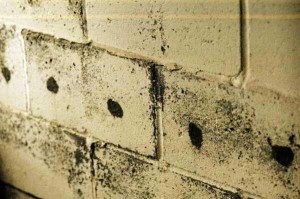 It’s rare in pest control to get a nice letter; our job involves mess and dead disgusting bugs. So much so that Mike Rowe of “Dirty Jobs” did a whole episode on pest control. I remember when I was first starting out in this career that our branch manager posted a kind letter from a happy customer. One phrase struck me as odd and it has been with me ever since.
It’s rare in pest control to get a nice letter; our job involves mess and dead disgusting bugs. So much so that Mike Rowe of “Dirty Jobs” did a whole episode on pest control. I remember when I was first starting out in this career that our branch manager posted a kind letter from a happy customer. One phrase struck me as odd and it has been with me ever since.
“our termite man was very professional and he even swept up all the dirt when he was done with the job.”
Being new I had no idea what a termite job entailed but my first thought was “what a sloppy guy, if he has to make such a mess.” I never had to use a broom or clean up. This guy gets a nice letter for that?
Since then I’ve done thousands of termite jobs and let’s just say, I see the light. I spend almost as much time preparing and then cleaning and putting things back as I do actually treating the home.
A termite job means you need to treat access points which are usually along foundation walls. To get to those points you normally have to move a ton of furniture,(for basement homes) roll back carpets or cut out small circles where you intend to drill, Cut any bath traps in drywall on the backside of plumbing areas, dig a 6 inch trench all around the home (deeper in some areas), chip excess stucco from the base of the home also all around. With that done you can begin drilling. In basements and on attached outdoor slabs you use a hammer drill for a 1/4 inch hole every 12 to 16 inches. If the home is of hollow block construction then each brick void needs to be treated as well so you drill each block,twice.That’s a lot of holes, a ‘full drill’ job could take over 200. Now you can begin to spray which is really what you’ve been hired to do.
on attached outdoor slabs you use a hammer drill for a 1/4 inch hole every 12 to 16 inches. If the home is of hollow block construction then each brick void needs to be treated as well so you drill each block,twice.That’s a lot of holes, a ‘full drill’ job could take over 200. Now you can begin to spray which is really what you’ve been hired to do.
Spraying is probably the longest part of the job because you use low pressure to keep the mess to a minimum. (Fat chance) As you drag your hose along it bends bushes and knocks over your ‘winkle bottom’ statue and perhaps up roots a few small plants. Vertical treating is especially messy because even though you drilled to the soil through the slab, there’s no guarantee that it will take. In other words many holes spit the liquid back up and out as fast as you can spray it in. There are techniques to minimize this but it happens just about on every job. So with treating you do create a small puddle or two. Flooding the trench is quick and painless but the most experienced termite guys tell you to ‘make it like soup’. So you can imagine that might create a bit of a mess.
Ok so the treating is done; now you need to patch all those holes with cement, I have yet to find a tool or applicator that cleans this process up. You need to sweep up the drill dust first and then mix up a small bucket of cement and patch them with your hands. The end result is a home that looks like someone shot at with a machine gun as they were driving by. If you cut carpet or tile each patch needs to be glued back down. This hardly ever looks as good as new but a skilled tech can come pretty close. Now back with the furniture, how did it go? Assuming you didn’t dent any lamp shades a room can look relatively unscathed in this regard.
 There’s no way to unbend a bush or tape up a flower stem and the trench even with the dirt back in place still stands out especially if rock or mulch was involved.
There’s no way to unbend a bush or tape up a flower stem and the trench even with the dirt back in place still stands out especially if rock or mulch was involved.
Overall a termite job is not a pleasant experience and your home may receive some nicks but in the end with a little tlc it can be touched up and back to normal minus the hungry termites who wanted to make even more of a mess for you.




